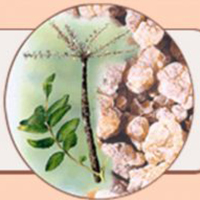boswellia
An Ancient Indian Remedy For Joint Pain & Inflammation
“An Ancient Indian Remedy For Joint Pain and Inflammation”
Arthritis and gout are systemic disorders in that they affect an entire organ system. They are pretty well universal and affect the vast majority of mankind to some extent. There are two types of arthritis — osteoarthritis and rheumatoid arthritis — but only one kind of gout. Osteoarthritis is the gradual, age-related deterioration of joint cartilage, but without the usual inflammation that always characterizes rheumatoid arthritis. Both, however, carry with them a great amount of pain and joint deformities.
Arthritis and gout have been around since the dawn of civilization itself. Radiological and pathological examinations of some of the early pharaohs of ancient Egypt have revealed moderate to severe cases of arthritis even then. King Henry the VIII of England, known for his huge gluttony and murderous relations with unfortunate women, suffered terribly from gout in his big toes and ankles.
Through the ages, men and women have sought for remedies that could, hopefully, allay some of the physical misery attending such excruciating pains. Tree resins became a popular way to treat these symptoms naturally. Today, the medical approach is in the form of nonsteroidal anti-inflammatory drugs (NSAID’s) like Ibuprofen, Naproxen Sodium and Salicylic Acid. A second line of therapy for minor pain relief has been found in creams or lotions containing Capsaicin (the isolated active ingredient form Cayenne Pepper).
An old Ayurvedic remedy from India appears to hold noteworthy promise in dealing with the pain generally associated with arthritis. Boswellia serrata and related species are balsamiferous trees that secrete aromatic oleoresins which are then collected when they become solid or semi-solid. In ancient times they were almost worth their weight in gold. Witness the fact that two of the three presents presented by the Wise Men to the infant Christ were such exudations – Frankinscense (Boswellia serrata) and Myrrh (the other was gold).
The tapping of the oleogum from the Boswellia tree occurs in the late fall when transverse incisions are made in the trunk and the bark is removed in between these incisions to allow the sap to ooze out of the wound. Once exposed to air, though, the exudate becomes gum-like in consistency. The resinous material is sieved and sold as “Salai Guggal” in various commercial grades. These various grades are then sold in numerous Indian bazaars or market places to manufacturers of incense (Aggarbattis), local perfumes (attars) and medicinal products.
Sabinsa Corporation’s Boswellin®, starts out from the highest grade of “Salai Guggal” material available and is then further purified through an extraction process that yields a product standardized for a minimum 65% boswellic acids, the active constituents in Boswellin®.
Too bad that the pharaohs and kings of the distant past didn’t have some of this remarkable product to take care of their own gouty aches and arthritic pains. Perhaps the course of some history might have been changed for the better had Boswellin® been around then. Oh well, as they say, “better late than never.”
Boswellin® is a registered trademark of Sabinsa Corporation
Disclaimer:
This product overview was written for the sole purpose of giving a brief history along with educational insights into the product listed above. It is not designed, in whole or in part, as advice for self-diagnosis or self-treatment and should not be construed as such.



